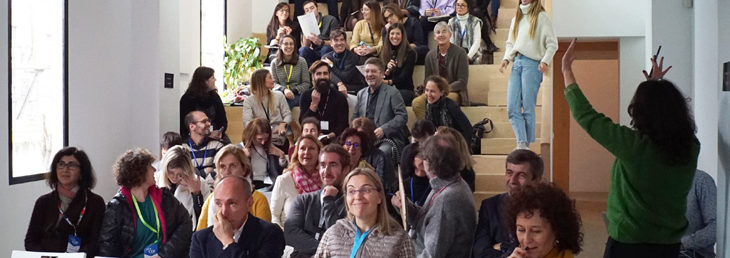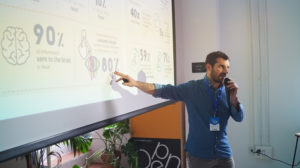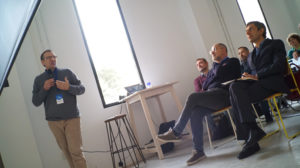
27 Dic Images to lie, brand, recognize and tell a story. Co-Session #33 (II)
Using images with branding purposes is no longer limited to the big brands. And all images, by definition, lie. During our last Co-Session on Images as the New Conversations we learnt how images can brand, lie, recognize and even be an essential element of a transmedia storytelling.
Images to Brand. Branding in the Digital Era. Marc Lite, co-founder of Firma
Nowadays, the humblest of brands has multiple points of contact with its clients and potential clients in which images can play a key role. Posts on social media get higher levels of attention and attraction when they include images or are made up of them. The same thing is also true of other types of digital communication, such as newsletters.
This has been proven by the success of emojis or Instagram, a social network which is essentially visual. But the appeal of images in these new points of contact is not limited to millennials. Some brands targeted at middle-aged or senior consumers are beginning to be aware of this fact, and are gaining competitive advantages by also incorporating the power of the image into their strategies.

Images to Lie. True or False? Fernando L. Mompó, the Institute of Next
Every image entails a representation of reality that is at the very least limited, if not outright manipulated. Power, whether religious or political, has been especially active throughout history in the use of images to create a collective imaginary that justified the maintenance of said power. It can be observed in a Romanesque fresco or in a poster of the Chinese Cultural Revolution, but it also happens here and now with the pictures taken by photojournalists and TV reporters to show us the world that we cannot cover with our own eyes.
We are naturally designed by evolution so that images have a greater influence and impression on us. But the mechanisms that allow us to decide in fractions of a second whether to fight or flight in the face of a potential danger turn against us when it comes to managing abstract and intangible concepts. Perhaps the only way out is to be more aware of it and, ultimately, to be able to fight against lying images with other images that lie slightly less.

Images to Recognize. Hi-Tech Facial Recognition Tomorrow. Javier Rodríguez Saeta, CEO of Herta Security
Facial recognition automation is living a new era. The advances in both the hardware and the software involved in facial recognition mean that the use of these technologies—which until very recently were only affordable for very few people—is now made democratic in many areas: transport, security, retail, banking… Nowadays the most advanced systems use techniques such as 3D modeling of faces or an improved definition of images to overcome barriers such as having part of the face concealed or a non-direct vision.
Automatic facial recognition is finding applications in areas such as biomarketing, making it possible for a shop or a shopping centre to easily obtain data on the number, gender, age and behavior of their customers, and even their feelings or emotions about the products. Also in the field of crowd analysis, with security purposes, it can detect potentially dangerous individuals or groups of people in real time.

Flash Workshop. Beyond Transmedia. Xavier Fisa, Lavinia
Transmedia storytelling is a fashionable concept in the world of communication that promotes storytelling that unfolds across multiple media and platforms. This approach has shown its potential, but it has also been unable to achieve its goals a few times.
Lavinia has developed an innovative tool aimed at helping to design an experience based on this type of storytelling: Transmedia Canvas. This tool invites us to define the what, how and why of the story we want to tell, as well as the types of media and the contents used and how we are going to unfold them over time. And above all, what is our target audience and the type of transformation we seek to achieve in said audience. With a Creative Commons license, the attendees of this Co-Session had the opportunity to use Transmedia Canvas with the example of a transmedia project that the producer is currently working on.



Sorry, the comment form is closed at this time.